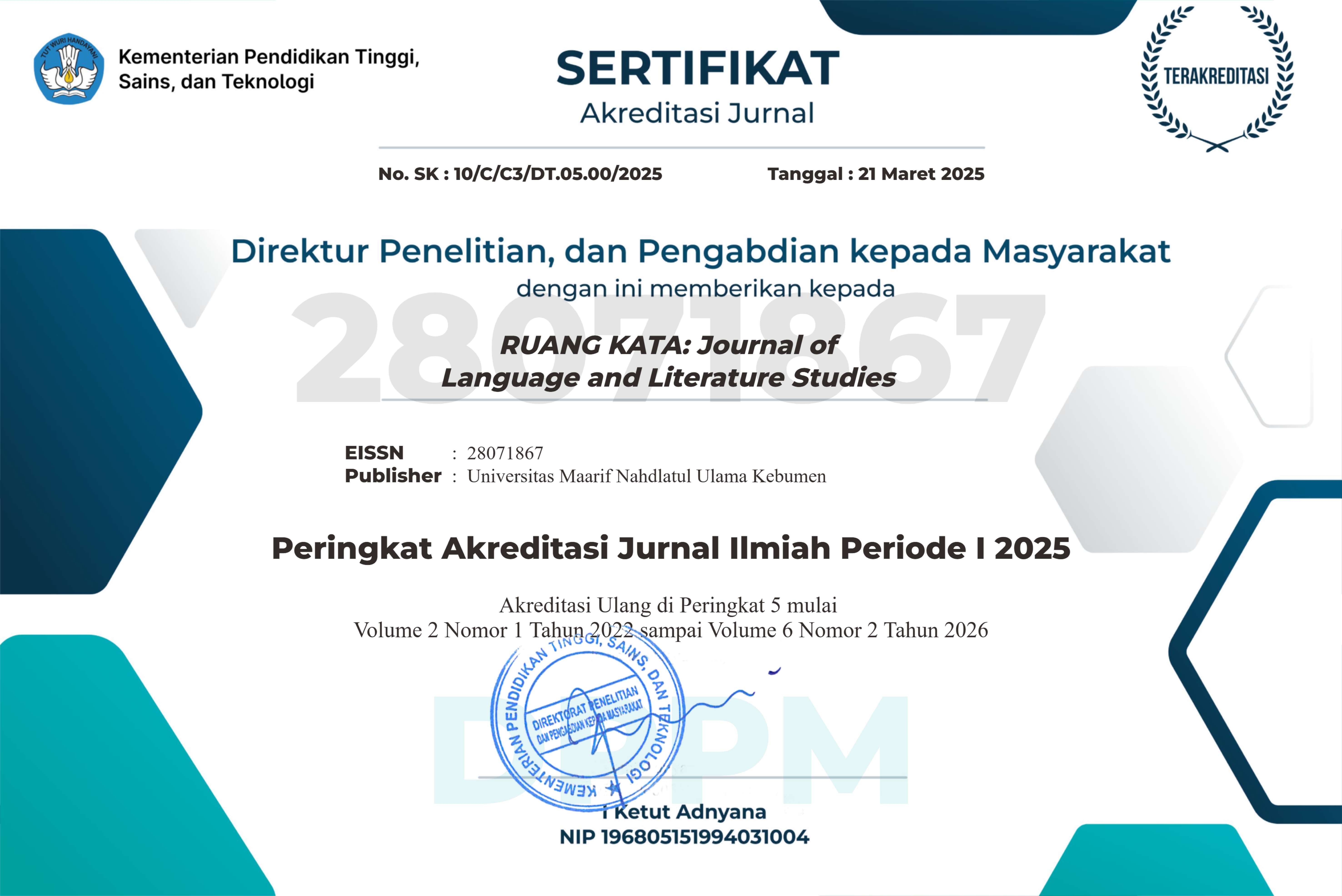Identifikasi Frasa Bahasa Sumbawa Dialek Sumbawa Besar Berdasarkan Kategorinya
DOI:
https://doi.org/10.53863/jrk.v5i02.1821Keywords:
Identification, Phrases, Sumbawa LanguageAbstract
The rapid influence of modernization in this digital era has led to a decline in the use of Sumbawa regional languages, especially among the younger generation. This phenomenon will lead to language decline or even extinction if no concrete efforts are made to preserve them. In this context, linguistic studies of structural aspects such as phrases have become increasingly urgent. Phrases in the Sumbawa Besar dialect of Sumbawa are a field of study worthy of further exploration. Therefore, this study aims to identify Sumbawa phrases in the Sumbawa Besar dialect based on their categories. The analysis stage utilizes the distribution method, a method whose analysis is sourced from the linguistic data itself, namely the Sumbawa language in the Sumbawa Besar dialect. The main technique in the distribution method is the direct element division technique (BUL), which is used to break down phrases into core elements and their boundaries. The analysis is carried out using basic and advanced techniques. The basic technique is the direct element division technique where lingual units (e.g., phrases or clauses) are divided into their constituent direct elements. Furthermore, the substitution technique is also used in order to determine the core word class of the phrase by replacing one of the phrase elements and seeing whether the phrase structure remains intact or changes. Data collected in the field in the form of Sumbawa language phrases are validated using triangulation techniques, namely: data triangulation; researcher triangulation; theory triangulation; and method triangulation. This study did not use researcher triangulation because this study was not a group study. Phrases found in the Sumbawa dialect of Sumbawa Besar have similarities with the types of phrases found in Indonesian. This is proven by the phrase data in the Sumbawa dialect of Sumbawa Besar which consists of: a) noun phrases; b) verb phrases; c) adjective phrases; and d) prepositional phrases. Each phrase in the Sumbawa dialect of Sumbawa Besar is built with core elements. As found in the data: nominal phrase → its core is a noun (ñIr uda); 2) verbal phrase → its core is a verb (maan rawi); 3) adjectival phrase → its core is an adjective (tpa jaka bal); and 4) prepositional phrase → preceded by a preposition (pa dalam lat).
References
Burhanuddin. (2015). Kamus Samawa–Indonesia. Edisi Ke-dua. Mataram, NTB: Kantor Bahasa Provinsi Nusa Tenggara Barat, Badan Pengembangan dan Pembinaan Bahasa.
Chaer, A. (2020). Linguistik Umum. Edisi Revisi. Jakarta: Rineka Cipta.
Dardjowidjojo, Soenjono. (2003). Psikolinguistik: Pengantar Pemahaman Bahasa Manusia. Jakarta: Yayasan Obor Indonesia.
Kridalaksana, Harimurti. (2008). Kamus Linguistik. Edisi Ke-empat. Jakarta: Gramedia Pustaka Utama.
Moleong, L. J. (2017). Metodologi Penelitian Kualitatif. Edisi Revisi. Bandung: Remaja Rosdakarya.
Patton, M. Q. (2009). Metode Evaluasi Kualitatif. Terjemahan Budi Puspo Priyadi. Yogyakarta: Pustaka Pelajar.
Putra, E. (2023). Identifikasi Fonem Vokal Bahasa Sumbawa Dialek Standar Sumbawa Besar berdasarkan Distribusinya. JIMPS: Jurnal Ilmiah Mahasiswa Pendidikan Sejarah, 8 (3), 2756–2761.
Rahima, Ade. (2024). Revitalisasi Bahasa Daerah Hampir Punah sebagai Dokumentasi Bahasa. Pengabdian Deli Sumatera. Vol. 3, No. 2: Hal. 51–56.
Ramlan, M. (2012). Morfologi Suatu Tinjauan Deskriptif. Cetakan ke 14. Yogyakarta: CV Karyono.
Sudaryanto. (2015). Metode dan Aneka Teknik Analisis Bahasa: Pengantar Penelitian Wahana Kebudayaan secara Linguistis. Edisi Revisi. Yogyakarta: Sanata Dharma University Press.
Downloads
Published
How to Cite
License
Copyright (c) 2025 Erwinsyah Putra

This work is licensed under a Creative Commons Attribution-ShareAlike 4.0 International License.
Authors retain copyright and grant the journal right of first publication with the work simultaneously licensed under a Creative Commons Attribution-ShareAlike 4.0 International License that allows others to share the work with an acknowledgment of the work’s authorship and initial publication in this journal














